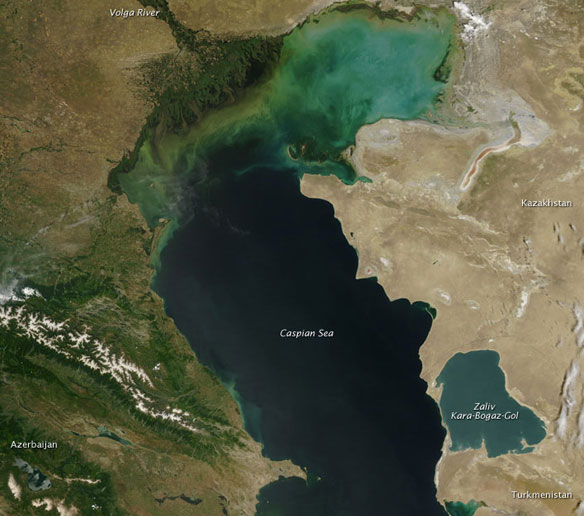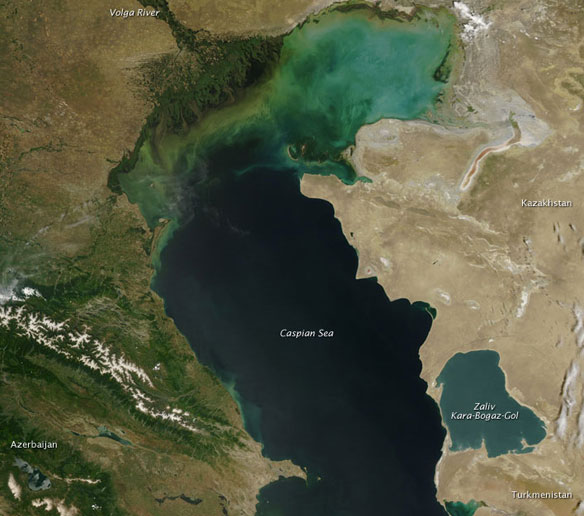
The Caspian Sea is the world’s largest inland water body. It covers roughly 371,000 square kilometers (143,200 square miles) and borders five countries. To the ancient Greeks and Persians, the lake’s immense size suggested it was an ocean, hence its name. Captions and Image source: NASA
Excerpts;
On the western edge of the Asian country of Turkmenistan, a vast desert meets the world’s most expansive inland water body, the Caspian Sea.
This natural-color Landsat 7 satellite image, taken on June 16, 2000, shows the sand-covered Dardzha Peninsula sticking out in to the Caspian. The peninsula is a landscape of sand dunes and salt flats that extends from Turkmenistan’s Garagum (or Karakum) Desert, which covers most of the country.
Dunes on the peninsula are long, linear features stretching mostly along the north-south direction. Toward the east, the dunes transition to level, sandy plains. Along the peninsula’s southern edge lies a network of partially submerged dunes, interspersed with shallow, salty lakes. These dunes separate the Dardzha from a neighboring peninsula, the Cheleken…









